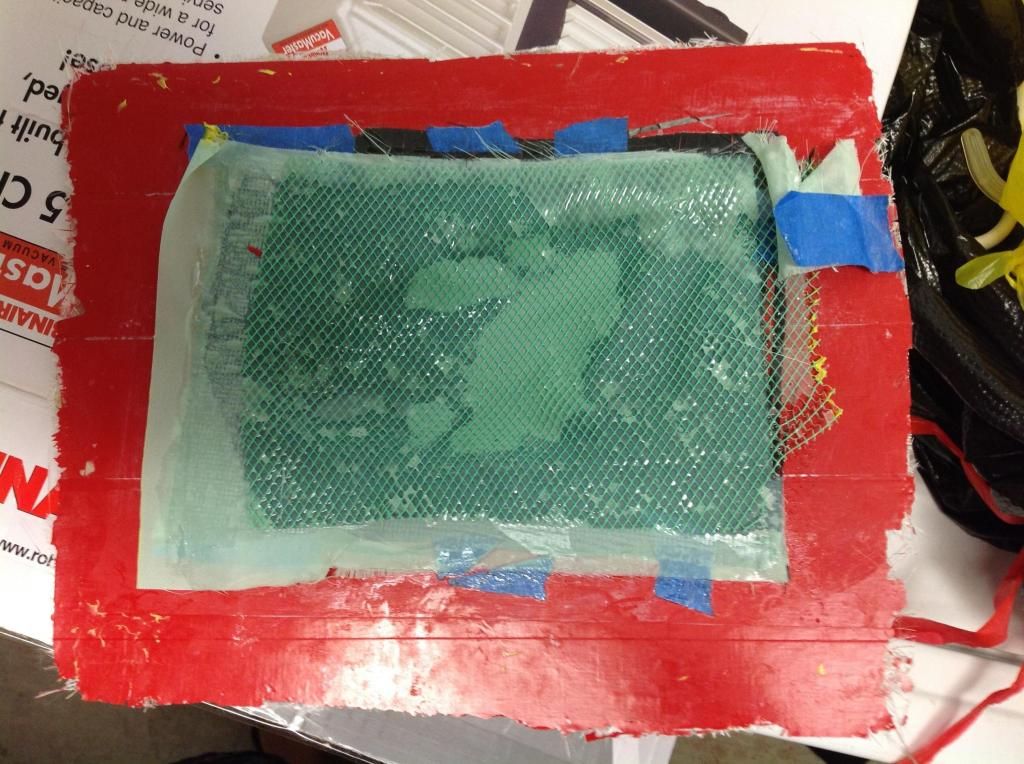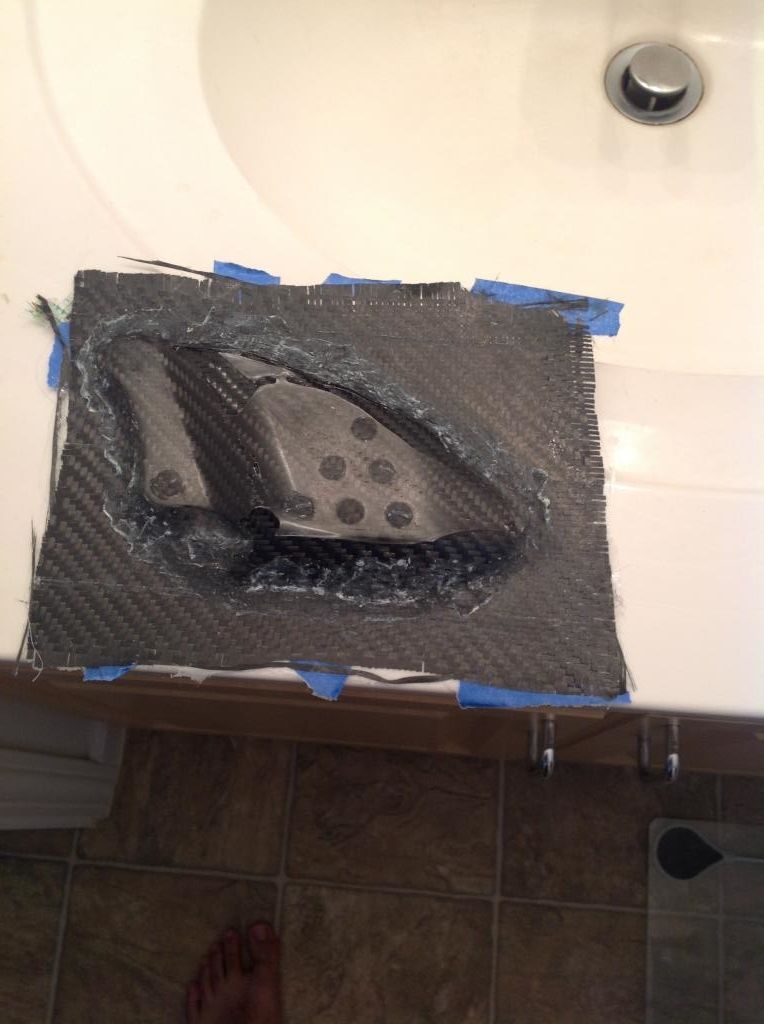hey guys,
So today I was feeling bold and decided to try infusion today. It was a major disaster and was wondering if you guys could give me tips. Here’s the setup I used today…
1.5 cfm robinair vacuum pump
1 layer 2x2 5.7 oz twill cf
1 layer 6 oz fiberglass
1 layer airtech peel ply b green
1 layer airtech green flow 75 flow media
1 layer nylon bagging film
polyester clear surfboard laminating resin
2 1/4" vacuum t fittings
1/4" resin in/out lines
spiral tubing on both sides
-
I wasn’t able to get a vacuum on my own without the help of the pump being constantly on. I spent 1.5 hours trying to find the leaks. I noticed some of the leaks were due to the spiral tubing ends cutting the bagging film. I found those and put gum tape over the spots, but there continued to be a leak. I even used my old nursing stethoscope to find the leaks and somewhat found some. But after all that i couldn’t find the rest and just infused at 27 mmhg. Is it the flow media cutting into the nylon bagging although I couldn’t find any cuts? I smashed my tape down over and over around the edges, but that didn’t help, but I could hear hissing with my steth when placing it over certain areas of the gum tape, but that didn’t really help. I covered the inlet/outlet tubing with more gum tape but didn’t work.
-
When I degassed my polyester resin before adding the MEKP catalyst I was able to remove the bubbles. The only problem is that it made the resin on the bottom kind of gelled. Why is that? I opted not to infuse that resin. I just made another batch of resin and did not degas it (see next question).
-
So when I infused the resin, it did not flow like the videos I have watched. It infused, but it had so many fast moving bubbles come out of the spiral tubing. Kinda looked like the bubbles rushing out of a scuba person’s mask.
Currently I’m in 1.5 hours of the pump being on and it’s holding 27 mmhg. Since the polyester resin has pretty much set in, I’m gonna turn the pump off at the 2 hour mark.
Can someone give me tips on how I can avoid these problems?
Thanks in advance…





